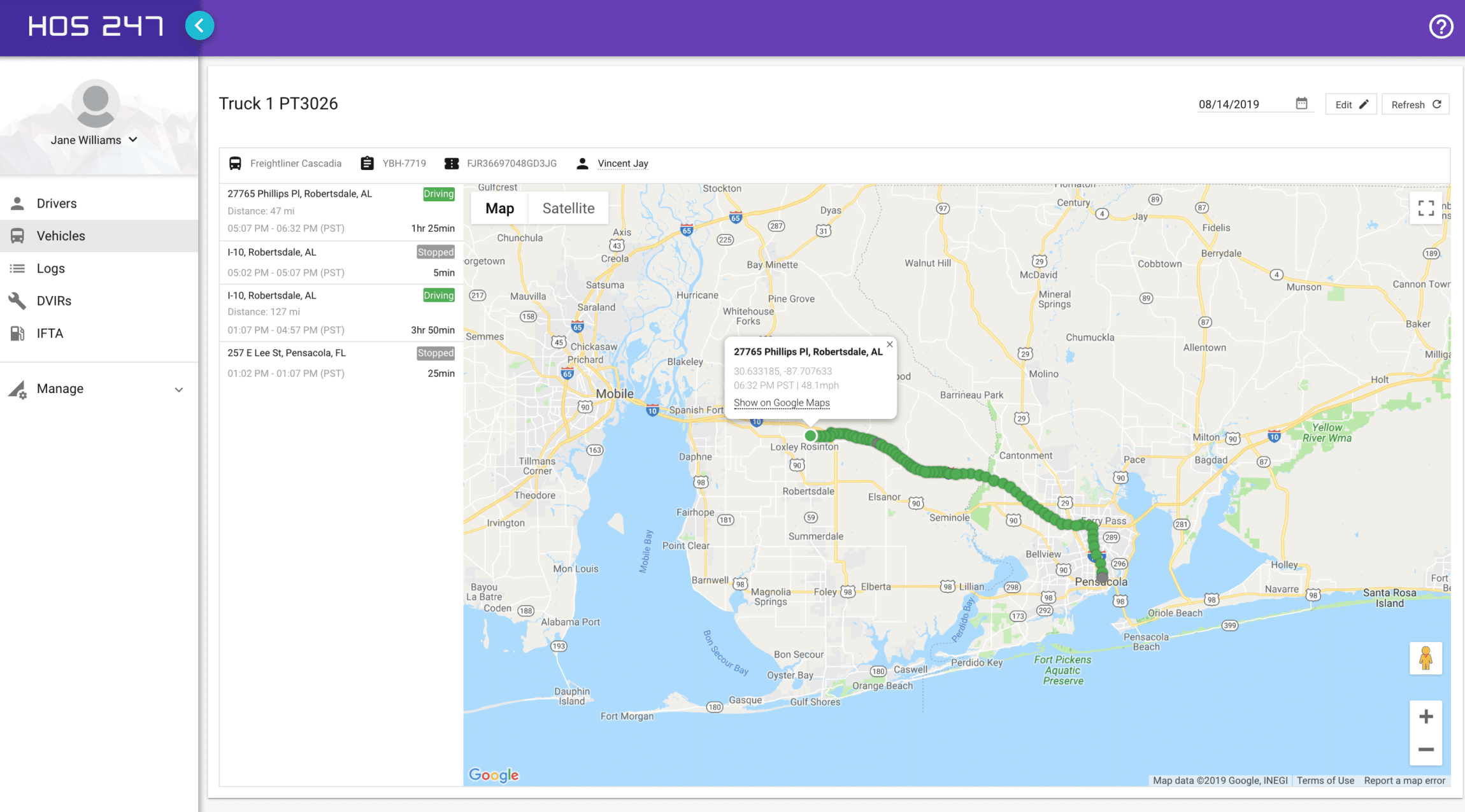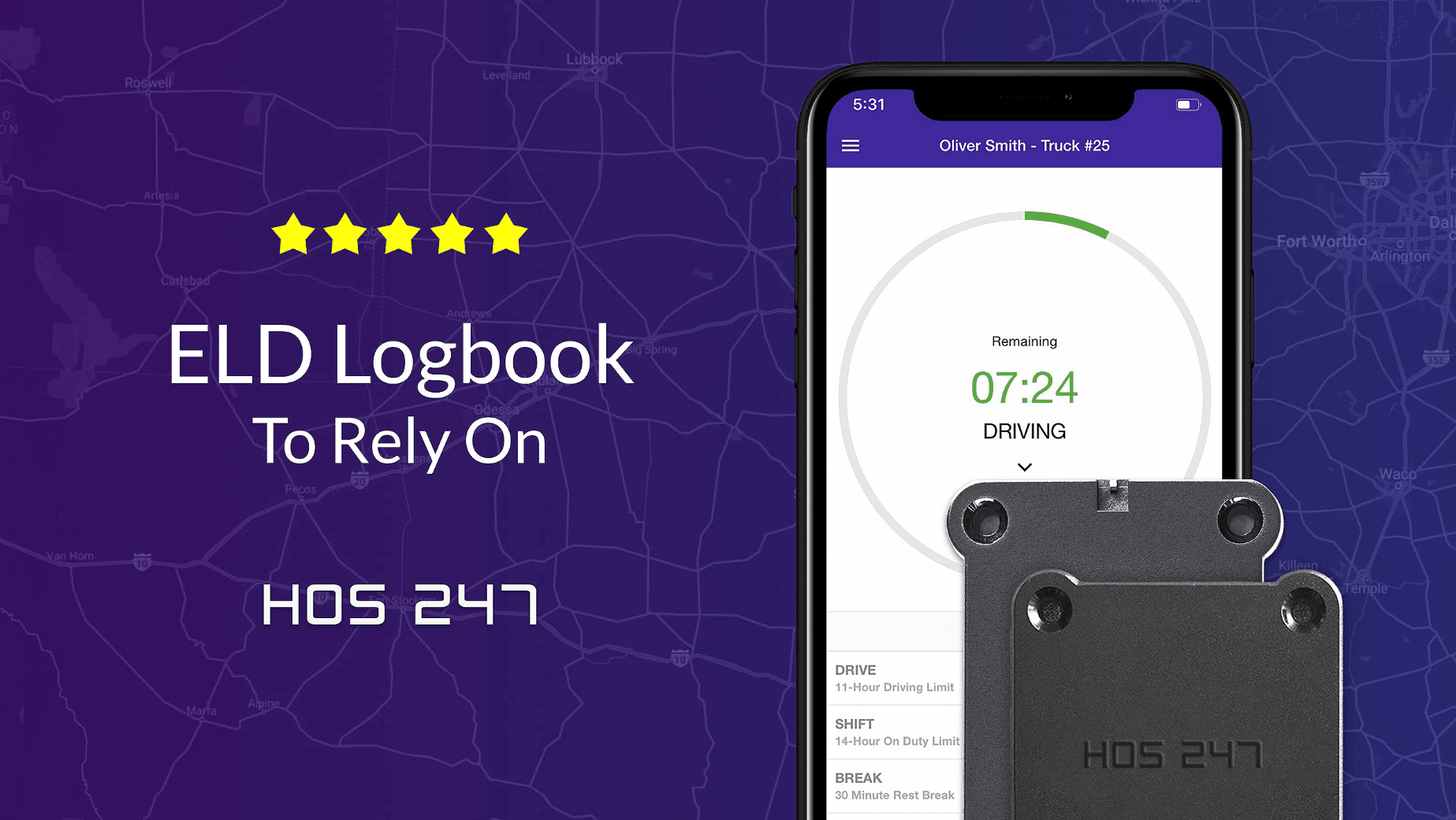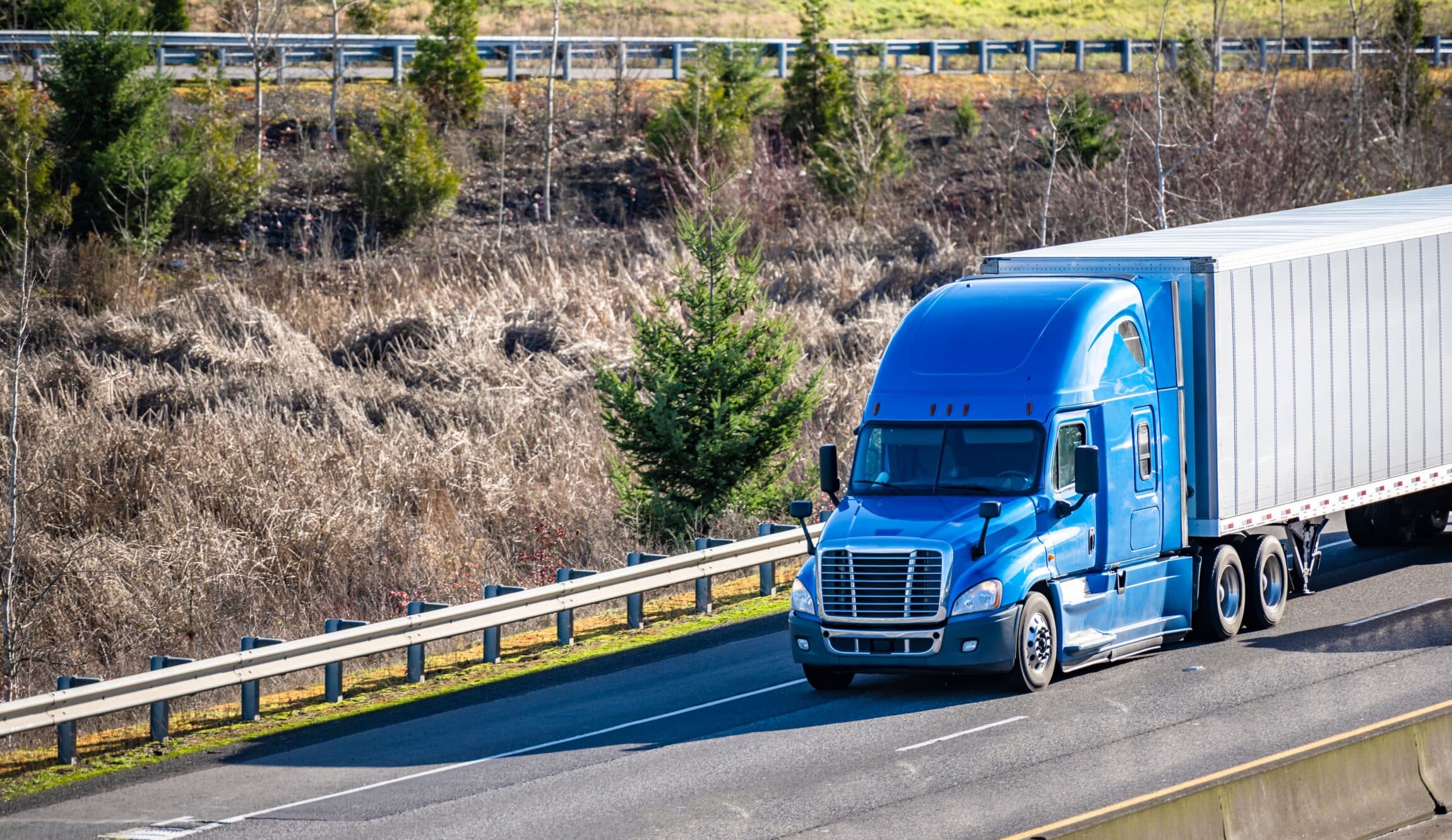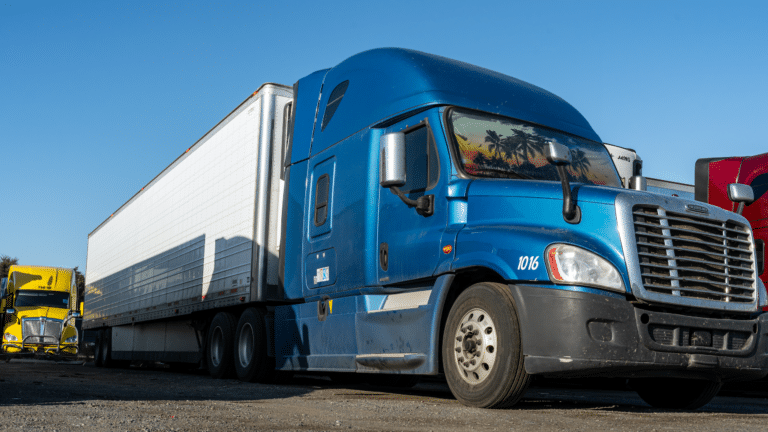Electronic logging devices (ELDs) have fundamentally changed how commercial drivers track their hours of service, transforming what was once a paper-based system into a digital requirement that affects every aspect of trucking operations. Since the Federal Motor Carrier Safety Administration (FMCSA) implemented the ELD mandate, these devices have become as essential to trucking as a CDL itself.
The Department of Transportation (DOT), through the FMCSA, enforces strict ELD compliance requirements designed to improve road safety and ensure drivers get enough rest. However, the regulatory landscape can be challenging, especially as rules evolve and enforcement becomes more sophisticated.
This guide helps truckers and fleet managers understand current DOT regulations on electronic logs, avoid costly compliance mistakes, and choose an electronic logbook that actually makes their operations more efficient rather than just checking a regulatory box. Whether you’re an independent owner-operator or manage a large fleet, staying compliant while maintaining productivity requires the right knowledge and the right tools.
Do you have any questions? Talk to ELD Advisor: 650-405-3372 or Request Callback
DOT and FMCSA: Who Regulates Electronic Logs?
Understanding who writes the rules and who enforces them helps you know where to get answers when you have questions. The Department of Transportation is the big umbrella agency that handles all transportation safety — planes, trains, boats, and trucks. But when it comes to your electronic logs and commercial driving rules, you’re dealing with the FMCSA, which is the part of the DOT that specifically handles commercial motor vehicles.
Here’s what the FMCSA actually does:
- Writes the hours of service rules that your electronic logbook has to follow.
- Keeps the official list of approved ELD devices.
- Decides what happens when you get audited.
- Sets the technical specs that ELD companies have to meet.
- Trains the enforcement officers who inspect your logs.
The DOT sets the big-picture policy, but the FMCSA handles the details. During a roadside inspection, you might deal with a DOT officer, state police, or a certified inspector — but they’re all enforcing the same FMCSA regulations.
The bottom line is this: the FMCSA makes the rules about how your electronic logbook has to work, and the DOT makes sure those rules fit into the bigger safety picture. For you, that means ELD compliance isn’t just about avoiding fines — it’s part of a whole system designed to keep the roads safe for everyone.
When you have questions about HOS rules or DOT requirements for electronic logs, the FMCSA’s website has the official answers. When enforcement officers show up at your truck, they’re checking whether you’re following those FMCSA rules, regardless of which agency name is on their uniform.
Key ELD Mandate Requirements
Here’s what you need to know about staying legal with your ELD. The rules haven’t changed drastically, but enforcement keeps getting tighter, so getting this right matters more than ever.
FMCSA-Approval
This one’s simple but critical — if your device isn’t on the FMCSA’s official ELD list, you might as well not have one. DOT officers check this list during inspections, and using an unapproved device will get you the same violation as running without an ELD at all. The good news is that the FMCSA keeps their approved device list updated on their website, so you can verify your ELD anytime.
Automatic Driving Time Recording
Once you hit 5 mph, your electronic logbook should start logging drive time automatically. No button pushing, no forgetting to switch modes — the system handles it. This eliminates the “oops, I forgot to log that trip” problems that used to plague paper logs.

Complete Trip Data Collection
Your electronic logs track more than just drive time. They record engine hours, total miles, your location, and when you change duty status. This comprehensive tracking protects you during audits and gives you solid data if there’s ever a dispute about your logs.
Tamper-Proof Protection
ELDs are built to detect tampering attempts. If someone tries to disconnect the device or mess with the data, the system flags it immediately. This protects honest drivers from false accusations while keeping the playing field level.
ELD Mandate Exemptions
Short-haul drivers within 150 air miles who return to the same location daily and work no more than 14 hours can still use paper logs. Drive-away and tow-away operations where the vehicle being driven is the commodity being delivered are also exempt. More exemptions exist for vehicles manufactured before 2000, drivers who use logs 8 days or fewer in a 30-day period, and some agricultural operations. These exemptions have remained largely stable since the ELD mandate was implemented.
What’s New in 2024-2025
The biggest changes involve better cybersecurity and clearer rules for data transfers during roadside inspections. The FMCSA has also simplified some of the technical requirements, making inspections faster and less stressful for drivers.
Why Many Fleets Choose HOS247 for DOT-Compliant ELDs
When you’re required to follow DOT electronic log requirements, you need to pick a system that makes your job easier instead of harder. Here’s why drivers and fleet owners keep choosing HOS247:
- FMCSA-approved. HOS247 is listed on the FMCSA’s official registry of self-certified ELDs. Our system is regularly updated to stay compliant as regulations evolve — automatically, and at no extra cost.
- Easy to use. Most drivers get comfortable with the app within a day or two. The interface is simple and intuitive. The system handles complex rules in the background, including 34-hour resets and split sleeper calculations.
Support that calls back. Our multilingual support team is available seven days a week in English, Spanish, Russian, and Polish. If your call drops we call you back so you’re not stuck restarting the process during a roadside inspection. - No long-term contracts. With HOS247, you’re not locked into multi-year deals. Choose month-to-month flexibility or save with an annual plan. Either way, there are no cancellation fees or hidden restrictions if your needs change.
- Two-week trial. We offer a risk-free trial so you can test the system under your real operating conditions. If it’s not the right fit, you can return it — no questions asked.
- Built-in features. Along with full ELD functionality, HOS247 includes GPS tracking, IFTA mileage reporting, and DVIRs at no additional cost. Everything runs through a single, integrated platform — no need to manage multiple systems or apps.
- Reliable hardware. The plug-and-play device installs in minutes, maintains a stable connection with your truck, and is built to withstand the tough conditions of commercial trucking.
With HOS247, compliance doesn’t mean complexity. It means having the right tools to keep your logs accurate, your operations efficient, and your business moving forward without the stress.
Top Compliance Mistakes and How to Avoid Them
Even experienced drivers can get tripped up by ELD compliance issues that seem minor but create major headaches during inspections. Here are the mistakes that show up most often in violation reports and how to stay clear of them.
Missing or Unassigned Driving Time
This happens when your ELD records driving time but doesn’t connect it to a specific driver. Maybe you forgot to log in, or the device didn’t recognize when drivers switched. Either way, unassigned driving time is a serious violation that can put you out of service immediately. Make it a habit to check your logs at the end of each shift and assign any orphaned driving time right away.
Using Outdated or Non-Compliant Devices
Some drivers are still running ELDs that got removed from FMCSA’s approved list, or they’re using devices that haven’t received required software updates. Check FMCSA’s website periodically to make sure your device is still listed. If your ELD provider goes out of business or stops supporting your model, you need a replacement fast — not when an officer tells you during an inspection.
Incomplete or Missing Driver Vehicle Inspection Reports (DVIRs)
Your ELD should handle electronic DVIRs, but some drivers skip them or fill them out incorrectly. A missing DVIR can trigger additional scrutiny during inspections and create liability issues if there’s an accident. Take the extra two minutes to complete your pre-trip and post-trip inspections properly in the system.
Poor Record-Keeping During Technical Failures
When your ELD malfunctions, you have limited time to get it fixed before you need backup documentation. Keep paper logs available and know how to use them correctly. Document the malfunction immediately and contact your ELD provider for support. Don’t just hope the problem fixes itself — that’s a guaranteed violation waiting to happen.
Ignoring Software Updates and Driver Training
ELD software updates often include compliance changes or bug fixes that affect your legal status. Enable automatic updates when possible, and make sure all drivers know how to use new features. Many violations happen simply because drivers don’t understand how their ELD works or haven’t adapted to recent changes.
The key to avoiding these problems is treating your ELD like any other critical piece of equipment — maintain it properly, use it correctly, and have a backup plan when things go wrong.

The Impact of DOT Regulations on Daily Trucking Operations
DOT regulations don’t just affect your logbook — they change how you actually work every single day, from when you start your truck to where you park for the night.
Drive Time Starts Automatically
Your ELD begins tracking drive time as soon as your truck hits 5 mph. That means no more stretching time like you could with paper logs. If you’re 30 minutes away from a drop-off but only have 20 minutes left on your 11-hour clock, the logbook won’t budge, you’re done driving. But this same strictness can work in your favor when dispatch pushes for “just one more pickup” and your ELD shows you’re out of hours.
Roadside Inspections Are Faster — Or Slower
When you’re pulled over, officers can view your driving history. If everything checks out, you’re cleared quickly. But missing data or unassigned driving time can drag out the inspection for an hour or more while they sort through the issues.
Your Logbook Becomes a Digital Audit Trail
The FMCSA uses your logs to flag unsafe driving behavior. Go over your hours twice in a month, and you could trigger an audit. That’s when they’ll look into everything—from your medical card to your maintenance history. But if you stay clean, you’re less likely to be scrutinized.
Shippers and Dispatchers Track Your Time
Customers want precise ETAs, and many use your ELD data to monitor your progress. This helps you prove detention time when you’re stuck waiting at a dock, but it also raises expectations. Dispatch now expects perfect timing with every load.
ELD Mistakes Come With Consequences
Forgetting to switch to off-duty at a truck stop, failing to assign driving time, or running a faulty device can all lead to being placed out of service. That means losing income and facing fines that can add up fast even for a single mistake.
The bottom line is that ELD regulations control when you can drive, when you must stop, how long your inspections take, and even how customers and dispatchers treat your schedule. Learning to work with these constraints instead of fighting them is what separates drivers who stay profitable from those who constantly struggle with compliance problems.

Choosing the Right ELD for DOT Compliance
Not all ELDs are built the same, and picking the wrong one can turn a compliance requirement into a daily headache. Here’s what separates the systems that actually help your operation from the ones that just create more problems:
- Real-time tracking that actually works. Your electronic log should deliver accurate GPS data and mileage tracking without frequent dropouts or glitches. Reliable tracking supports IFTA reporting, customer updates, and location verification during inspections or disputes.
- Ease of use over fancy features. Choose a system that’s intuitive and practical. If drivers struggle to change duty status or view their logs, it increases the risk of violations. A simple, dependable interface beats flashy functions that go unused.
- Responsive technical support. ELD issues rarely happen during office hours. Look for providers with responsive, knowledgeable support teams you can reach when you need them, not just scripted responses or long hold times.
- A good match for your fleet size and operation. Owner-operators need affordability and ease of use. Large fleets may require driver performance monitoring, violation alerts, and dispatch integration. Pick a system that fits your business model.
- Transparent pricing with no hidden costs. Be wary of low advertised rates that leave out activation fees, hardware replacements, or add-ons for basic features. Ask for full pricing details, including cancellation terms, before you commit.
- A proven track record. Stick with FMCSA-registered providers that have maintained compliance over time. New or unproven companies might vanish or lose certification leaving you scrambling for a replacement.
Choosing the right electronic logbook provider can simplify your daily operations and reduce compliance risk. The wrong one adds stress, errors, and unexpected costs. A well-tested, transparent, and easy-to-use system is worth the investment.
DOT Compliance Checklist for Drivers and Fleet Managers
Staying compliant requires consistent daily habits and regular system maintenance. Here’s a practical checklist that covers the essential tasks for both drivers and management.
Daily Driver Tasks
- Verify your ELD is connected and recording data properly at shift start.
- Check that yesterday’s logs are complete and certified if required.
- Complete your pre-trip inspection through the ELD system, noting any defects.
- Monitor your available hours throughout the day and plan routes accordingly.
- Review the day’s logs for accuracy before ending your shift.
- Assign any unassigned driving time immediately.
- Complete your post-trip inspection and document any new defects.
- Ensure duty status transfers are recorded correctly during driver switches.
Weekly Management Tasks
- Run violation reports to identify patterns before they become serious problems.
- Review driver logs for frequent edits, missing data, or compliance issues.
- Verify all ELD devices are receiving required software updates.
- Confirm that the system maintains its FMCSA certification status.
Monthly Management Tasks
- Test backup procedures and paper log capabilities.
- Ensure drivers know how to properly document ELD malfunctions.
- Review training needs based on violation patterns.
- Update driver files with current certifications and endorsements.
Audit Preparation
- Maintain complete records of elog data transfers and software updates.
- Document all technical issues and resolutions.
- Keep records of driver training on ELD procedures and regulation changes.
- Test data backup systems to ensure FMCSA audit readiness.
- Review violation patterns and document corrective actions taken.
Emergency ELD Malfunction Procedures
- Keep blank paper logs available and ensure drivers know proper usage.
- Document the exact nature and time of any ELD failure immediately.
- Contact your provider for technical support and repair timeline.
- Switch to paper logs if malfunction exceeds 24 hours.
- Maintain detailed records of malfunction period and all repair actions.
Regular attention to these details prevents small issues from becoming major compliance problems that can shut down your operation.

Conclusion
DOT electronic logs rules compliance is an ongoing responsibility that affects every part of your trucking operation. Regulations keep evolving, enforcement gets tighter, and penalties keep increasing. But drivers and fleets that use compliance as a business tool — not just a government requirement — usually improve their operations while staying legal.
The key is choosing an electronic logging system that works with your operation instead of against it. A reliable system reduces compliance stress, provides solid documentation during inspections, and gives you data to run more efficiently. Poor ELD choices create daily headaches and compliance risks that can shut you down.
Whether you’re running one truck or a hundred, the basics stay the same: use FMCSA-approved equipment, keep accurate records, train drivers properly, and have backup procedures when technology fails. Getting these fundamentals right separates successful operations from those that struggle with constant compliance problems.

As an expert in B2B and B2C sales, I’ve dedicated myself to perfecting sales processes and client retention strategies in the logistics and trucking industry. I have significantly contributed to the expansion of the ELD service, catering to retail and wholesale clients in need of HOS247 ELD solutions. My unwavering commitment to implementing state-of-the-art sales techniques and technologies ensures the continuous growth and success of businesses I work with.












In the world of transportation, meeting legal requirements is crucial. Finding a trustworthy digital logbook for truckers has become essential since the electronic logbook mandatory date. A good electronic logbook should simplify operations. Whether you’re a driver using electronic logs

Navigating the world of commercial driving requires more than just the ability to maneuver a vehicle; it also involves a detailed approach to logging hours of service (HOS) as required by the Department of Transportation (DOT). These DOT log books

Navigating the maze of Federal Motor Carrier Safety Administration (FMCSA) regulations can feel like driving through thick fog with a bad set of headlights. For truckers, one of the most persistent areas of confusion is the Electronic Logging Device (ELD)